Status Active Termini CarlingfordClyde Stops 7 | Locale Sydney, Australia Stations 7 Opened 17 November 1888 Service type Commuter rail Track gauge Standard gauge | |
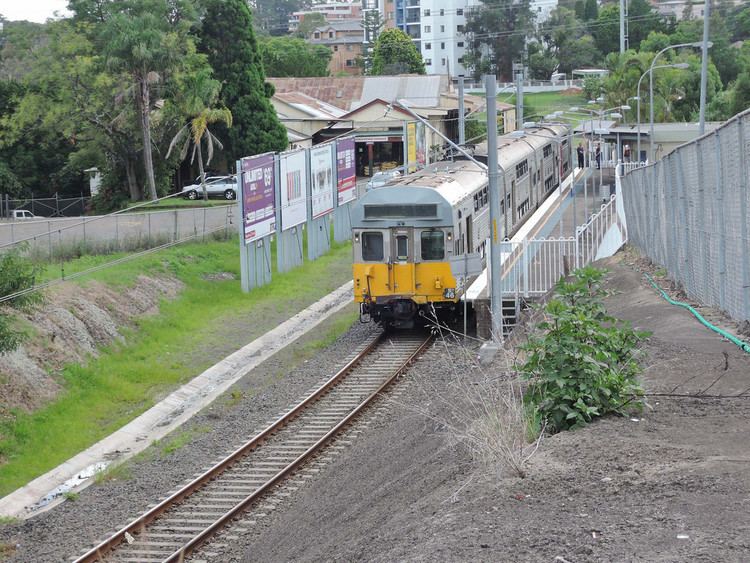 | ||
End Carlingford railway station | ||
The Carlingford railway line is a minor railway line in Sydney, Australia. Opened in 1888, the line runs north-south between the suburb of Carlingford and the Main Suburban railway line at Clyde. Passenger services on the line form part of the Sydney Trains commuter rail network and are marketed as the T6 Carlingford Line. The railway line's small catchment, low patronage, short platforms and single track for much of its length mean the T6 generally operates as a shuttle service, with passengers changing at Clyde for T1 North Shore, Northern & Western Line services to the Sydney central business district and Parramatta. Most of the line is planned for conversion to light rail as part of the Parramatta Light Rail network.
Contents
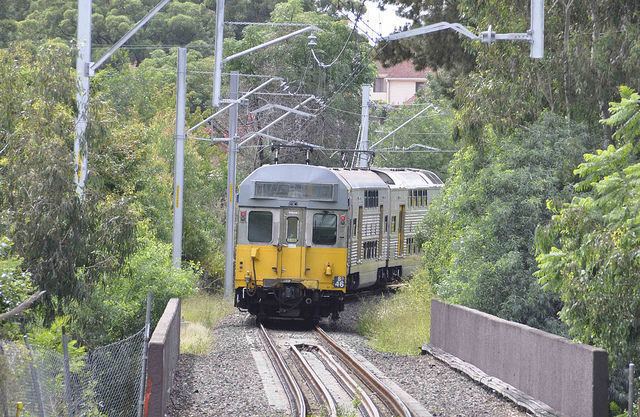
Line description

The Carlingford line branches off the Western line at Clyde heading north over Parramatta Road on a level crossing, before heading under the M4 Western Motorway to a station opposite Rosehill Gardens Racecourse. It is a double track line to this point.
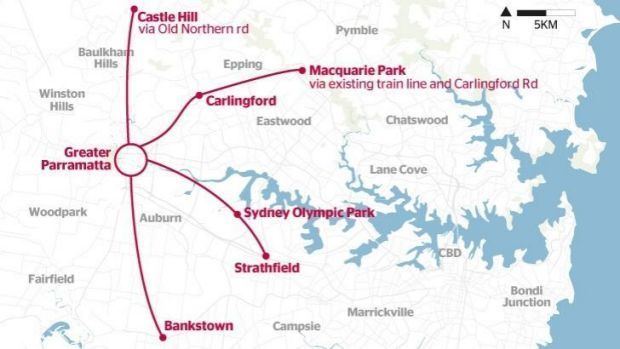
Immediately south of Rosehill, the two tracks join, before dividing into two bidirectional tracks, the Sandown line and the Carlingford line. At Rosehill, two platforms are provided, one four-car long platform on the Carlingford line and one platform which is approximately sixteen-cars long on the Sandown line track which is used for special events at the racecourse. During large special events at Rosehill Racecourse, such as horse racing meetings, a charter train is provided to operate a shuttle service with 20-minute frequency between Clyde and Rosehill only.

The line then heads in a north-easterly direction over the Parramatta River to Carlingford. There are no crossing loops or any further sections of double track on the line, and thus no capacity for trains to pass each other. The average 12 minute travel time between Clyde and Carlingford allows a theoretical maximum capacity of approximately two trains per hour on this line. It is Sydney's least-used suburban railway line.
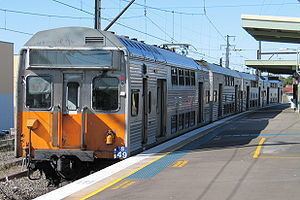
The stations between Camellia and Carlingford consist of a single platform of a sufficient length to accommodate four-car suburban trains. All other stations on the Sydney Trains network are capable of accommodating eight-car trains.
Sidings
A number of industrial and car storage sidings have been built on the line.
Starting from the Clyde end:
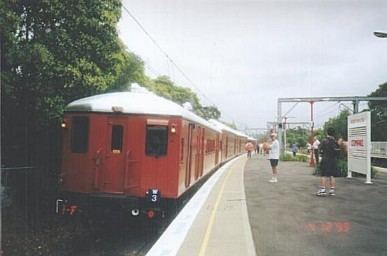
History
The line was opened in two sections: Clyde to Camellia was opened on 17 November 1888, and Camellia to Carlingford (then known as Pennant Hills) was opened on 20 April 1896. Telopea station was added in 1925. Originally the line was privately owned by two companies: the line from Clyde to Rosehill was owned by John Bennett and the line from Rosehill to Carlingford was owned by the Rosehill Railway Company. The lines were taken over by their bank in 1896, with the Government purchasing the line in 1898 and recommencing services on 1 August 1900.
The line from Clyde to Rosehill was electrified on 12 December 1936. The electrification was extended to Carlingford on 9 August 1959.
In 1996, the original iron lattice bridge over the Parramatta River was replaced. The new bridge only has one track, although it was built to allow a second track to be laid in the future. It sits on the refurbished piers of the original bridge.
In early 2007 the pedestrian crossings at Telopea and Dundas stations were rebuilt. The new automatic crossings provide audible and visual warnings of an approaching train and a short time later close the metal gates.
Over the week of 20 to 26 October 2007, the section of track from Telopea to Carlingford was completely replaced, utilising concrete sleepers instead of timber ones. The section from Telopea to Rosehill was similarly upgraded over the fortnight of 22 June to 3 July 2009. The railway remains on timber sleepers from Rosehill to Clyde.
The line was colour-coded orange in CityRail promotional material until 1991 when it was coded yellow (along with the Western Line). Since 2000, it has been colour-coded dark blue.
Until January 2010, the line carried oil trains to and from the Clyde Refinery on the Sandown line.
During October 2016, the Sandown line traffic was officially suspended. A Stop Block was placed on the Sydney side of Access Road level crossing.
Modification proposals
The line's low frequency and levels of patronage have led to various inquiries and studies into the future of the Carlingford line. A major problem remains the level crossing over Parramatta Road, which holds up traffic when trains travel across the road. Proposals have been made including underground tunnel links to Clyde or Granville stations, or even to replace the line altogether with a more frequent light rail or busway service.
The State Government originally planned for the Carlingford line to be part of Stage 2 of the Parramatta Rail Link. The plan would have incorporated the majority of the line, with the line between Carlingford and Camelia Camellia duplicated. Telopea, Dundas, and Rydalmere stations would also have been duplicated and upgraded to allow eight car trains. Camellia station would have been demolished, Rosehill station closed and replaced by a new underground station with a preliminary name of 'Rosehill/Camellia'. Carlingford station would also have been replaced by a new underground station. Various proposals were put forward, including a three-way underground junction near Carlingford linking the station to the proposed North West Rail Link as well as the line to Chatswood. In 2003, the Minister for Transport, Michael Costa announced that only Stage 1 of the line, from Chatswood to Epping, would be built, and the Carlingford line section indefinitely postponed.
However, on 11 August 2010, the Federal Government promised $2.6 billion towards this project, who, along with the State Government, would extend the line from Epping to Parramatta via the Carlingford line. Work was to commence in 2011, with a projected 2017 finish. However, following a change of State Government at the 2011 election, the project was shelved. A large amount of land lies behind Carlingford station, for future extensions of the line.
Under the Rail Clearways Project, the line was to have a crossing loop constructed at Dundas station and thus increase train frequency to half-hourly throughout the day, however this project was cancelled in November 2008.
In 2013, Parramatta City Council published a feasibility study into a proposed Western Sydney Light Rail network. The study proposed the construction of a light rail line from Parramatta to the Macquarie Centre, running parallel to the Carlingford line between Camelia and Dundas. The report noted that while the future of the railway line was a matter for the state government, conversion of the line to light rail would reduce the cost of the light rail's construction significantly.
In December 2015 the NSW Government announced the Camellia - Carlingford section of the line would be converted to light rail, forming a branch of the Parramatta Light Rail network. This would replace the connection to the Sydney Trains network at Clyde with a link to Parramatta and Westmead. Construction is expected to begin in 2018 and be completed by 2023. The Carlingford line will need to be shutdown to allow conversion works to take place. The duration of this closure has yet to be decided. The Clyde - Camellia section will be permantly closed.
